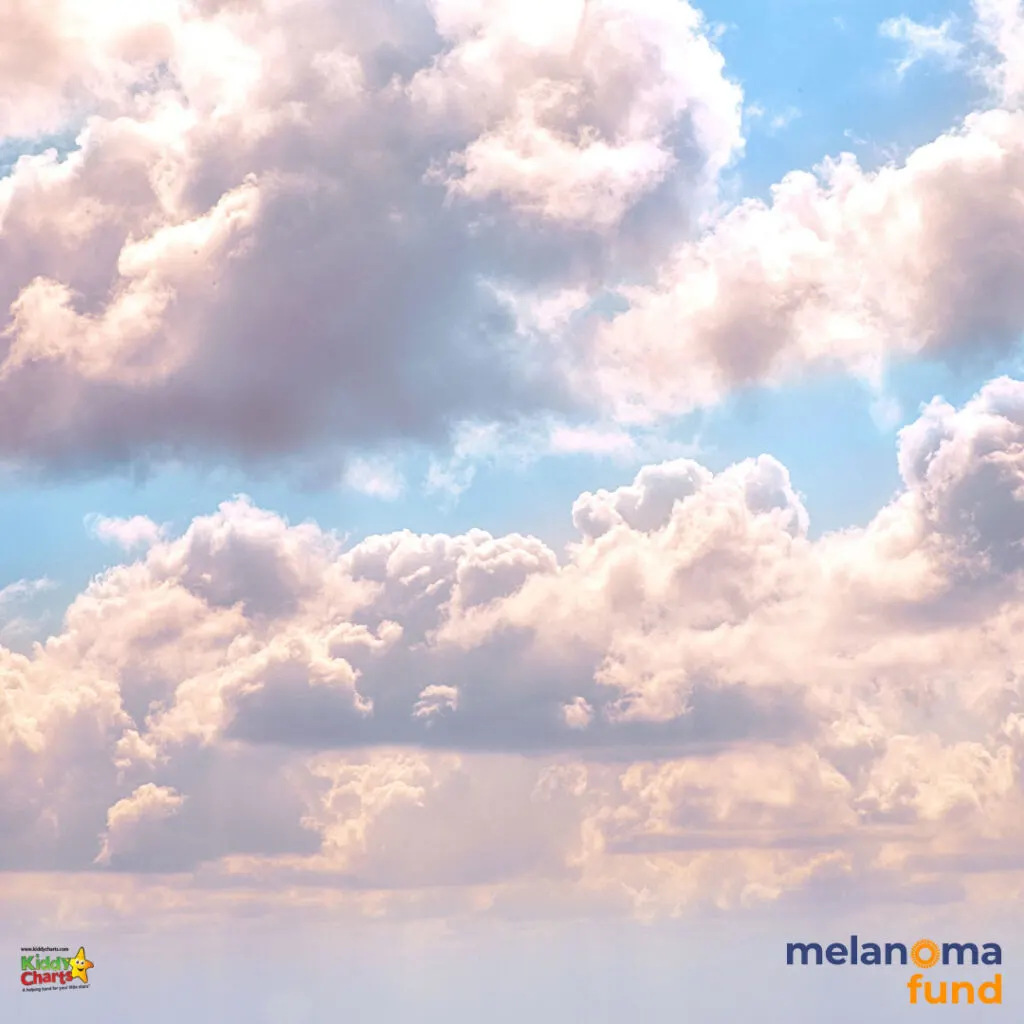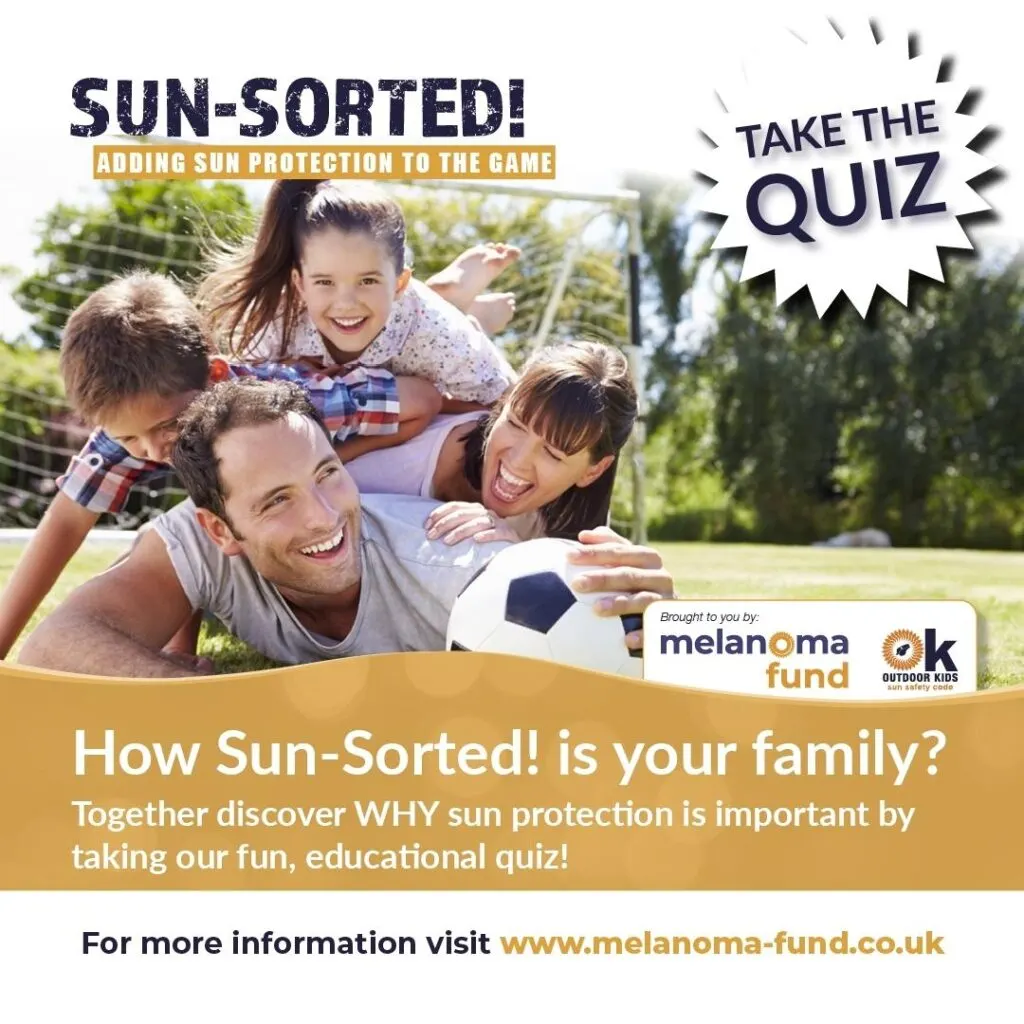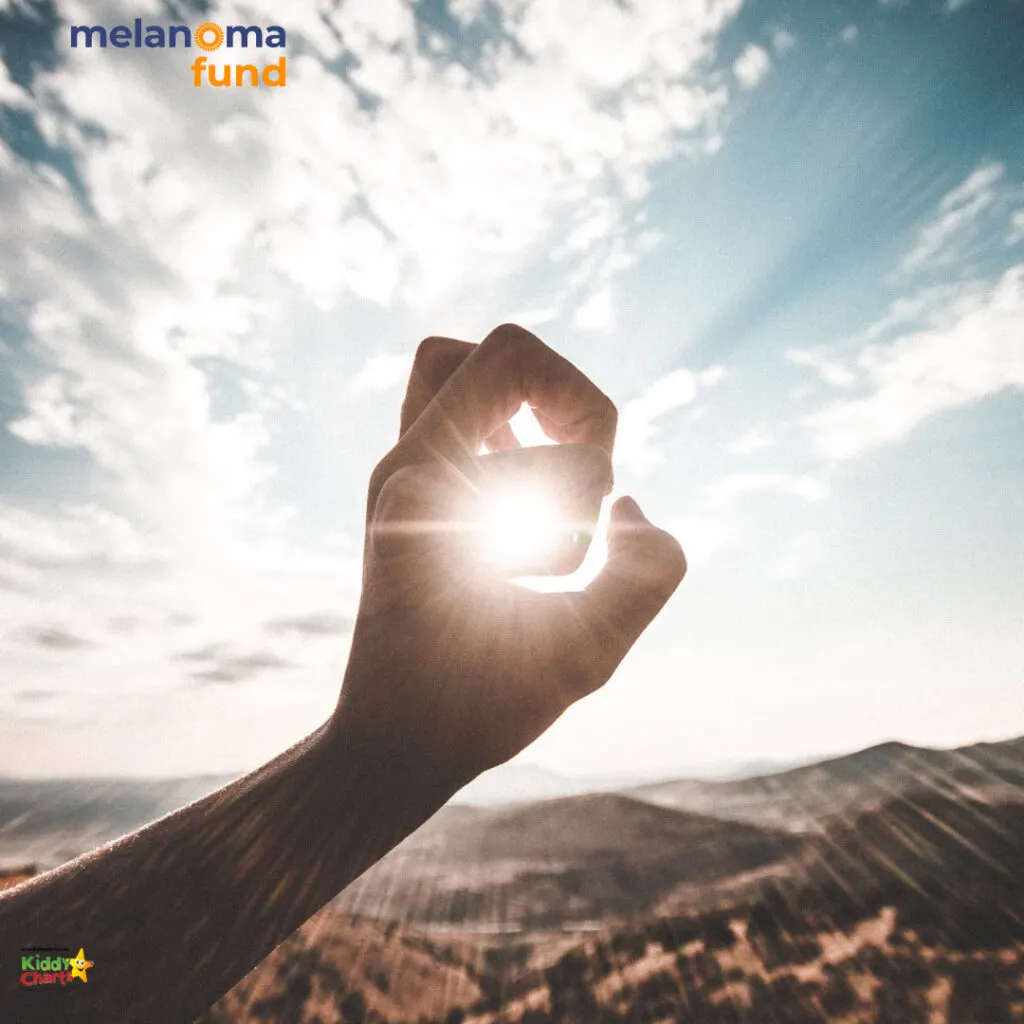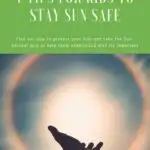We are working with The Melanoma Fund in order to help kids stay sun safe. They have a fabulous Sun-Sorted! quiz on their site which makes an excellent resource for both parents and schools in STEAM and beyond to use to help children and families understand why it is important to stay sun safe.
| The Melanoma Fund raises awareness of sun protection, and the risk of skin cancer to all in sport and outdoor education. They run 4 campaigns; the Outdoor Kids Sun Safety Code targeting KS2 children, Watch Your Back! for gardeners and horticulturalist, Slip! Slap! Swing! for all in golf and Sunguarding Sport for all in sport, launching in May 2022. |
This is a sponsored post.

Getting children to develop healthy habits is important for their wellbeing. With just one blistering sunburn doubling the chances of melanoma, sun protection routines should be just as important as brushing teeth, eating well, and getting plenty of exercise.
As a parent, getting children to understand why sun protection is important will help promote a more positive association with their actions, helping glue them in place. Avoiding sunburn is key, and this is especially true in early spring, where the cooler temperatures can deceive us on the power of the sun’s UV rays.
With skin cancer our most common and fastest growing cancer, it is also mostly preventable, and by simply being more aware of the risks and acting accordingly, we can reduce incidence.
You’ll be surprised at some of the key facts around protection from the sun.
Here are our top three facts that you thought you knew about sun safety for kids, but perhaps you didn’t….
Key sun safe facts for kids
Fact 1: You need protection at UV Index 3
When the UV Index is 3 and over sun protection is required when outdoors. You can check this on your smart phone as it features on the weather app.
FACT 2: Cloudy skies don’t mean you are protected
A cloudy sky does not protect us from sunburn, with almost 80% of UV rays passing through cloud cover. This means that without protection, we are all at risk of an unexpected springtime sunburn.

FACT 3: Sunburn is most prevalent in April not the summer months
More cases of sunburn are reported in April than in any other month, mainly because of how we underestimate the power of the sun, and the novelty factor of the warmth of the sun on our skin, which admittedly feels amazing after a long winter!
Get your family Sun-Sorted!
To support parents and teachers, the Melanoma Fund created the Sun-Sorted! quiz as part of the Outdoor Kids Sun Safety Code. This free educational resource provides KS2 children with fun and interesting facts on the sun, their environment, and their skin.

Written by leading experts, the quiz offers explanations to ensure full comprehension, and is designed to be undertaken by the whole family. All those completing the quiz receive a free personalised certificate, featuring their score, from ‘Solar Starter’ to ‘Solar Superpower.’
Getting the whole family to learn about the sun before summer will ensure they are prepared and will help avoid that spring sun sneaking up to catch them unaware. It is also a timely reminder for parents to ensure they are ready for summer!
7 tips on teaching kids to be sun safe

Here are some further facts from the Melanoma Fund to help support everyone’s education and keep kids sun safe:
- Encourage children to get outside and enjoy the sunshine. It is vital for creating Vitamin D, which is essential for healthy bones, teeth, and muscles, but avoid a sunburn!
- Apply a broad-spectrum SPF30 or higher product on all exposed skin, even if its cloudy and remember that some vitamin D is still absorbed with the use of sunscreen.
- Children’s skin is delicate and can burn within minutes, so be aware that sunburn can happen anytime from March until October.
- The UV index tells us how strong the sun’s UV rays are. If it is 3 or above, which is common from March onwards, you need to protect skin.
- Don’t be deceived about temperatures being lower in spring compared to summer. Getting a sunburn is not dependent on the air temperature, so it’s best to take protective measures and be prepared, even if the weather app forecasts a cool day.
- Getting children to understand why they should sun protect their skin will ensure they take responsibility, however, remember to lead by example and apply it yourself!
- Remember that a rainy day can turn into a scorcher, so when leaving the house, be sun prepared with a small sun-protection kit, containing sunscreen, hats and sunglasses to ensure you don’t need to buy twice.
Take the Sun-Sorted! quiz by visiting https://www.melanoma-fund.co.uk/ok-sun-safety/sun-sorted-quiz/.
The Sun-Sorted! quiz is filled with amazing facts to challenge all the family, and will help outdoor loving children discover the principles of sun protection, making your life easier!
- HOW many times does the earth fit into the sun?
- WHEN do we need to hydrate during sport?
- WHICH vitamin does the sun help make in our skin?
- WHAT are the warning signs of too much sun?
The science behind the facts on Melonoma
“Why do we think that sun exposure in childhood, especially overexposure that results in sunburn, is an important factor in the risk of developing melanoma later in life?”
Brian Diffey BSc, AKC, PhD, DSc is an Emeritus Professor of Photobiology in Dermatological Sciences
Support for this belief comes largely from migration studies in that fair-skinned people who migrate from the U.K. to sunny countries like Australia have a much lower risk of developing melanoma than native-born Australians.
And other studies have indicated that British people born in sunny India and then returning later in life to the U.K. have a higher risk than those born in the U.K.

What both these observations show is that sun exposure in childhood is critical in the risk of developing melanoma.
Further evidence for the importance of childhood sun exposure as a risk factor in melanoma can be found when we look at the age at migration.
Migrants arriving from the U.K. to Australia at less than 10 years of age have lifetime risks of melanoma like those of native-born Australian residents, whereas migrants arriving later in adolescence or adulthood had substantially lower risks.
In conclusion, we can say that in fair-skinned people the highest risks of melanoma are observed among those who are exposed to strong sunlight in early life, even if the period of exposure was relatively brief.
We hope that you have found this helpful, if you like the article, why not sign up to our newsletter?
Thanks for visiting us,
Helen





